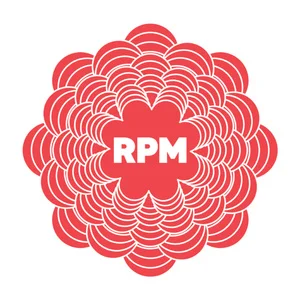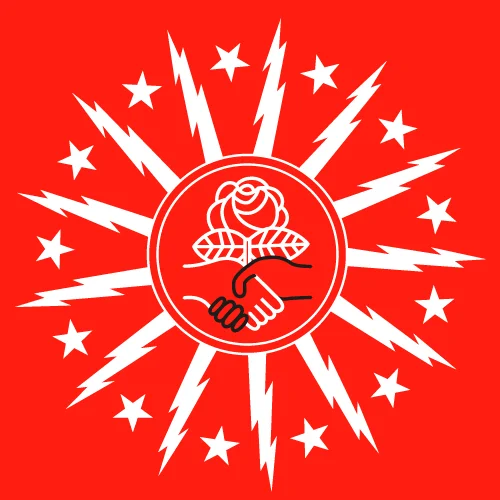

Storyteller Kelli Dunham on her journey from nun to nurse and queer comedian

February 5th: Why We Fight for Immigrants
A history of US Imperialism in Central America and a report from DSA comrades in Tijuana

January 29th: Electoral Power!
On episode 4 of RPM, we’ll be talking about the surprisingly important electoral landscape in New York City in 2019!
In the studio, we'll have Renée Paradis from the Brooklyn Electoral Working Group of NYC-DSA all before we connect with you — the audience — to take your calls in the last quarter of the show!
Tune in on Tuesdays at 5:00 PM on WBAI 99.5 FM New York and online at: nyc-dsa.link/nycRPM and follow us on Twitter @nycRPM

January 22nd: #NoNewJails & Prison Abolition
People do not belong in cages. Kei of the No New Jails Coalition and Jordan of NYC-DSA and the No New Jails Coalition joined Jake, our host who also participates in both organizations in the studio. Together they have a passionate conversation on what abolition is, DeBlasio's jail expansion plan, and the current fight to prevent people, mostly poor people of color, from being warehoused because they can't afford bail.

January 15th: Ecosocialism
Features include Patrick Houston from NYCC on the fight against Cuomo on the Williams Fracked Gas Pipeline, and other fracking infrastructure, Nicole Catania from the Sunrise Movement, on the Green New Deal, their hope and their plan for the first half of 2019, Alexandria Villasenor, a 13-year-old climate striker, and Kelly Roache from NYC-DSA and the NY Democracy Alliance on what you can do locally to fight.


Women’s March 2019
Friday, March 8th @ 4:15PM
Niagara Square, Buffalo NY. Come join in solidarity as we revel in the #womenswave and we #UnitetheStruggles.
Organized by WNY Peace Center, with Riverside Salem Environmental Cottage.

January 7th - #NoAmazonNYC
In our first broadcast, State Senator Julia Salazar joined us to discuss the impact of Amazon's plans for HQ2 in Long Island City and the #NoAmazonNYC coalition that's organizing against it.


The Labor Theory of Value
In order to explain exactly what socialism is, and how it works, it is important to first understand what the wealth in our society is, and where it comes from. It is a question of whether or not the people who actually create products of material value get to keep the fruits of their own labor, or even a fair portion of the profits, and the answer is that the lion’s share goes to someone else.
Ordinarily, this wouldn’t be a problem if the system self-regulated and produced livable conditions for the worker – if the “invisible hand” as Adam Smith put it, always succesfully provided social benefits through the actions of an individual driven by profit. The truth is that market interactions and price signals are very effective for regulating exchange itself, but the benefits seldom actually reach the people who created the value behind them in the first place.
What is Capitalism?
Capitalism has many possible definitions, but when socialists use the word “capitalism” we are referring to a system of private ownership in which one person, or a small group of individuals, owns and controls a company’s means of production, and is able to exclude access to them.
These means of production are called “private property” or “capital” and include tools, machinery, raw materials, buildings, real estate, etc. A “capitalist,” therefore, is a person who owns capital.
Think of capitalism as an economic monarchy: The shareholders or owners hand orders down, and they are passed through the chain of command until they get all the way to the bottom to you, the worker.
Value and Where it Comes From

In Wealth of Nations, Adam Smith explained the Labor Theory of Value like this:
“The real price of everything, what everything really costs to the man who wants to acquire it, is the toil and trouble of acquiring it. What everything is really worth to the man who has acquired it, and who wants to dispose of it or exchange it for something else, is the toil and trouble which it can save to himself, and which it can impose upon other people. What is bought with money or with goods is purchased by labour as much as what we acquire by the toil of our own body. That money or those goods indeed save us this toil. They contain the value of a certain quantity of labour which we exchange for what is supposed at the time to contain the value of an equal quantity. Labour was the first price, the original purchase-money that was paid for all things. It was not by gold or by silver, but by labour, that all the wealth of the world was originally purchased; and its value, to those who possess it, and who want to exchange it for some new productions, is precisely equal to the quantity of labour which it can enable them to purchase or command.“
Socialists like to use the example of a chair. A chair has use-value: Someone can sit on it. It is much preferable to standing, and it’s safe to say that at least one chair can be found in nearly every American home. Use-value is a difficult thing to measure, though. Exactly how urgently is a chair needed? We can sit on the floor if we want. We might lie down instead. Some cultures don’t even use chairs.
Well, we can roughly approximate the use-value of a chair, instead, by seeing how much of something else a person is willing to trade for it. This is called “exchange-value.” A chair’s exchange-value might be worth $20, or 5 yards of raw lumber, or 6 hammers, or 1 peacoat. Simply put, a chair’s exchange-value increases or decreases by the laws of supply and demand.
But why does the chair have an exchange-value at all? For this, we refer to Adam Smith’s Wealth of Nations. It is the “toil and trouble of acquiring it.” If you could walk out of your house, and pluck a chair from a tree, it wouldn’t be worth much. It is precisely because a carpenter has taken raw materials and converted them into a chair through labor input, that it has acquired its value.
In order to build a chair, the carpenter needs wood, a hammer, a saw, and glue. He needs to get these items from someone else who made them, so he buys them for whatever their exchange values are. He then puts all of those items together to build a chair by spending a few hours sawing, hammering, and glueing. By the time he is done, the exchange-value of the chair has increased, and he can now sell it.
If he did nothing to the wood, hammer, saw, or glue and then tried to sell it, its value would have never increased. It would remain the same. So, we know that the value of the labor that he put into building the chair is the difference between the cost of his materials and the amount that he sold it for.
Labor Relations Under Capitalism

To continue with our chair analogy, the capitalist is a person who owns the wood, the hammer, the glue, and the saw that are needed to make the chair. The capitalist hires the carpenter to build a chair, and then he sells the chair for its exchange-value.
With the money he received, he keeps enough to replace the tools and raw materials that went into the chair in order to build another, and is left over with the amount of money equal to the labor that went into producing it.
The capitalist now decides what to do with the remainder of the money, which we call the surplus. First, he must pay the laborer’s wages, then he must keep a remainder of the surplus as profit. Adam Smith, here, considers profit a wage paid to the capitalist for the risk and labor of purchasing and managing the tools, raw material, and labor. But, the fact remains that the laborer did the majority of the actual input that turned the raw material into a chair.
As an experiment to see what the capitalist’s actual labor input is to the end product, let’s supose we left him alone with the wood, glue, hammer, and saw; and see what happens now that he took the risk of purchasing the stock. . . nothing. He needs a carpenter, or nothing will happen.
Even if you consider the capitalist more skilled, better compensated, or more essential to production than the worker, the chair still won’t get built without actual labor input. The capitalist can have a brilliant idea for a chair, and purchase mounds of wood, and take every ounce of “risk” that can be taken, but without employees to build chairs, he will have never increased the exchange-value of whatever he already has in order to be sold for a profit. The mere idea to undertake a venture is not sufficient justification to assume an employer had a greater amount of labor input in a process that simply couldn’t happen without his employees – especially to the extent we see in modern society where some employers receive hundreds of times the compensation that their employees do.
Henry George uses the example of gathering eggs in Progress and Poverty:
“A company hires workers to stay on an island gathering eggs, which are sent to San Francisco every few days to be sold. At the end of the season, the workers are paid a set wage in cash. Now, the owners could pay them a portion of the eggs, as is done in other hatcheries. They probably would, if there were uncertainty about the outcome. But since they know so many eggs will be gathered by so much labor, it is more convenient to pay fixed wages. This cash merely represents the eggs — for the sale of eggs produces the cash to pay the wages. These wages are the product of the labor for which they are paid — just as the eggs would be to workers who gathered them for themselves without the intervention of an employer.
In these cases, we see that wages in money are the same as wages in kind. Is this not true of all cases in which wages are paid for productive labor? Isn’t the fund created by labor really the fund from which wages are paid?”
So the leftover money that the capitalist is taking from the value of the chair that he sold for profit, largely comes from the labor of the worker – who didn’t get it.
Now we look back to the hammer: Someone had to cut down wood, and someone had to mine iron to get the raw materials for the hammer. Someone had to build a road that the raw materials are shipped on. Someone had to build the truck that carried the raw materials to the factory. Finally, a worker at the factory took the raw materials, and converted them into a hammer. None of these items simply popped into existence in the hands of the capitalist: they were purchased with the existing labor of the working class.
This is what Adam Smith means by “labour was the first price, the original purchase-money that was paid for all things.”
In capitalism, people who are already wealthy start off by having the money to purchase and control capital. The barrier to entry in production, and their exposure to risk is reduced compared to a person who owns nothing and has no choice but to sell their labor in order to live. When a capitalist is allowed to take surplus value from the labor that his employees as a whole produce, and make decisions with it, he is compelled to make choices that benefit himself. This doesn’t mean that capitalists are bad people. It is their job to increase profits however they can.
Adam Smith hoped that an employer would realize that having well-paid, happy employees would be to his or her own benefit. The opposite is true. Employers have an incentive to suppress wages, cheapen production, deprive workers of benefits wherever possible, and automate their own workforce out of the job. This was verified strikingly in the deplorable working conditions of the industrial revolution.
From a classical liberal perspective, this is the beauty of the free market. It’s flexible, efficient, and if you can’t earn enough money to survive, it’s your own fault. But, this looks a lot different when you start to see capitalism as system of an unaccountable minority on top, driven by greed, stealing from the very people who made them wealthy, and using the money to change legislation, and undermine democracy in order to further concentrate their own wealth.
Is this theory true? Well, if the labor theory of value is true, we would be able to see a divergence between productivity and compensation, because the people producing the value would not be getting it. Let’s check:

Socialism
Karl Marx first articulated the Labor Theory of Value as a system in which surplus value is actually taken from the person producing it. Socialists take a look at the material input and the labor input, and recognize that it is a buildup of human labor that no one person has a right to control.
Since the workers and the capitalist both brought value to the product that is being sold: one put in the material half, and the other added the labor, socialists believe that it is only fair (and in the best interest of society, anyway) that everyone who had a share in producing the final product should have a say in how it is used.
The “abolition of private property” and “collective ownership over the means of production” essentially just means that we believe the workplace should be run democratically. The company as a whole should hire and fire their managers, set wages, arrange benefits and goals, and determine how to increase profits. One person or a small group of people should not be allowed to suck wealth out of people who have no choice but to continue producing it in exchange for a bare existence.
W. E. B. DuBois said of democracy, “the best arbiters of their own welfare are the persons directly affected.” Workers will not vote to give power back to a tiny minority. They will not vote for pitiful wages or non-existent benefits. They will not vote to outsource their own jobs or work grueling hours.
Socialism is the belief that we should build a society based on worker self-management or “collective ownership,” mutual aid, and the basic principle that everyone is equal and has an equal right to exist.
What’s more: we see socialism as an urgent necessity. Capitalism is not equipped to deal with so-called “externalities,” that is, social consequences of an exchange that are not reflected in the cost of goods or services that are being produced and traded. Climate change is one such externality.
The global climate crisis is a threat to human existence, and we only have about a decade before we begin dealing with the repercussions in a very tangible way. As long as we live in a society driven by personal gain, the looming threat of human extinction will remain a mere footnote in our priorities.
Seize the means of production.


Rabbi Michael Feinberg on multi-faith labor organizing and what he learned from the Catholic left


Charlotte Metro DSA Opposes all 6 North Carolina Constitutional Amendments
The Charlotte Metro Chapter of the Democratic Socialists of America (CLTMDSA) strongly opposes the six NC constitutional amendments slated for the November 2018 ballot. These amendments are unintelligible jargon, unreadable, and ultimately part of a concentrated GOP power grab to gerrymander and take powers away from other elected officials. We urge others in the Charlotte-Metro region to also vote against all six amendments. Read more about them below.
Amendment 1: Photo ID voting requirement
This will require voters to show photo ID before casting a ballot. Defenders of these laws claim that IDs reduce voter fraud; however considering in-person voter fraud is extremely rare, requiring voters to show identification is more of “a solution in search of a problem.” The reality is that these ID laws prevent many from exercising their right to vote and are discriminatory against the poor, racial minorities, and other vulnerable groups.1
Amendment 2: Create an eight-member bipartisan election board
Under current North Carolina law, the election board consists of nine members – four from the governor’s party, four from the other major party, and one independent – with the governor overseeing the board. This amendment will reduce the nine-member election board down to eight, all of which would be appointed by the general assembly thus taking power away from the governor.2 As the current governor is a Democrat, this amendment is simply a blatant power grab by the Republican- controlled legislature.
Amendment 3: Reduce the state income tax cap from 10% to 7%
As Democratic Socialists, we believe that people should pay their fair share and that if you have more, you should pay more in order to create a society that meets the needs of all. This amendment would cap the income tax at 7%, thus concentrating more wealth for the wealthy while putting more financial burden on lower-income earners and potentially cutting funds from needed services.
From the News & Observer: “A state’s revenue needs can vary unpredictably over time and income tax caps eliminate flexibility. If income taxes can’t be raised to meet needs, a state’s primary alternative is to raise sales taxes (and various usage fees). Sales taxes (and usage fees) impact poor people much more than they impact wealthy people: Poor people must spend most of their income, subjecting most of their income to sales tax, while wealthier people spend a much lower percentage of their income. Moreover, [this specific cap] locks in rates that are lower than recent historical rates and the new flat-rate tax structure shifts more of the income tax burden to lower earners. Other states such as Kansas that have lowered tax rates dramatically have had poor results. We are already seeing hints of the impact in N.C. with a precipitous drop in inflation-adjusted per student spending in public schools.”3
Amendment 4: Establish a merit system for filing judicial vacancies
This amendment is another attempted power grab by the NC GOP and shifts the power of who appoints judges between elections from the governor to the state legislature. Instead of the governor making appointments, anyone in the state may submit recommendations to the general assembly who will then provide the names of two NCGA-selected nominees to the governor. The governor will then have to select from between those two nominees who are not subject to gubernatorial veto. If a vacancy occurs right before an election, the chief justice of the N.C. Supreme Court is then tasked with the appointment instead of the governor.4
Amendment 5: Protect the right to hunt, fish, and harvest wildlife
There is no current threat to these activities in the state, and having this on the ballot is more so an attempt to get the GOP base to show up to the polls. Since the amendment refers to making these “preferred means of managing and controlling wildlife,”5 this also causes ecological concerns in that it could result in reduced protections for wildlife areas and habitats. It also defers hunting and fishing laws to the general assembly, which takes power away from local groups to establish regulations and create or maintain protected wildlife areas. Again, this is nothing more than another attempted power grab by the state legislature.
Amendment 6: Add rights for victims of felony crimes
As Democratic Socialists, we stand for the abolishment of prisons and the carceral state. This particular amendment is dangerous as it could result in even more people in prisons and with harsher sentencing. There are also risks that this could create even more bias against defendants facing trial.
Mark Rabil, law professor at Wake Forest University says, “Obviously everybody agrees victims should have rights, but the way I see the goal of Marsy’s Law is so much more than that................. The bottom line is
they’re giving victims and victims’ families constitutional party status that can override the constitutional rights of a defendant to a fair trial and the right of districts attorneys to pursue cases in ways they perceive to be fair.”6
On top of the fact that the criminal justice system already largely discriminates against vulnerable communities and racial minorities, this amendment is an open door to further exacerbate that discrimination and create even more disparity within our justice system.
CLTMDSA sees these amendments as disingenuous and not in the best interest of the people of North Carolina. Rather these efforts are to increase GOP control, consolidate power for the wealthy, and create more inequality for the most vulnerable in the state. Please join us in voting NO on all six in November.
1https://www.aclu.org/other/oppose-voter-id-legislation-fact-sheet 2 https://longleafpolitics.com/nc-constitutional-amendments-2018/
3https://www.newsobserver.com/opinion/op-ed/article214823780.html 4https://longleafpolitics.com/nc-constitutional-amendments-2018/ 5https://www.newsobserver.com/news/politics-government/article216437935.html 6https://www.charlotteobserver.com/news/politics-government/article218118890.html